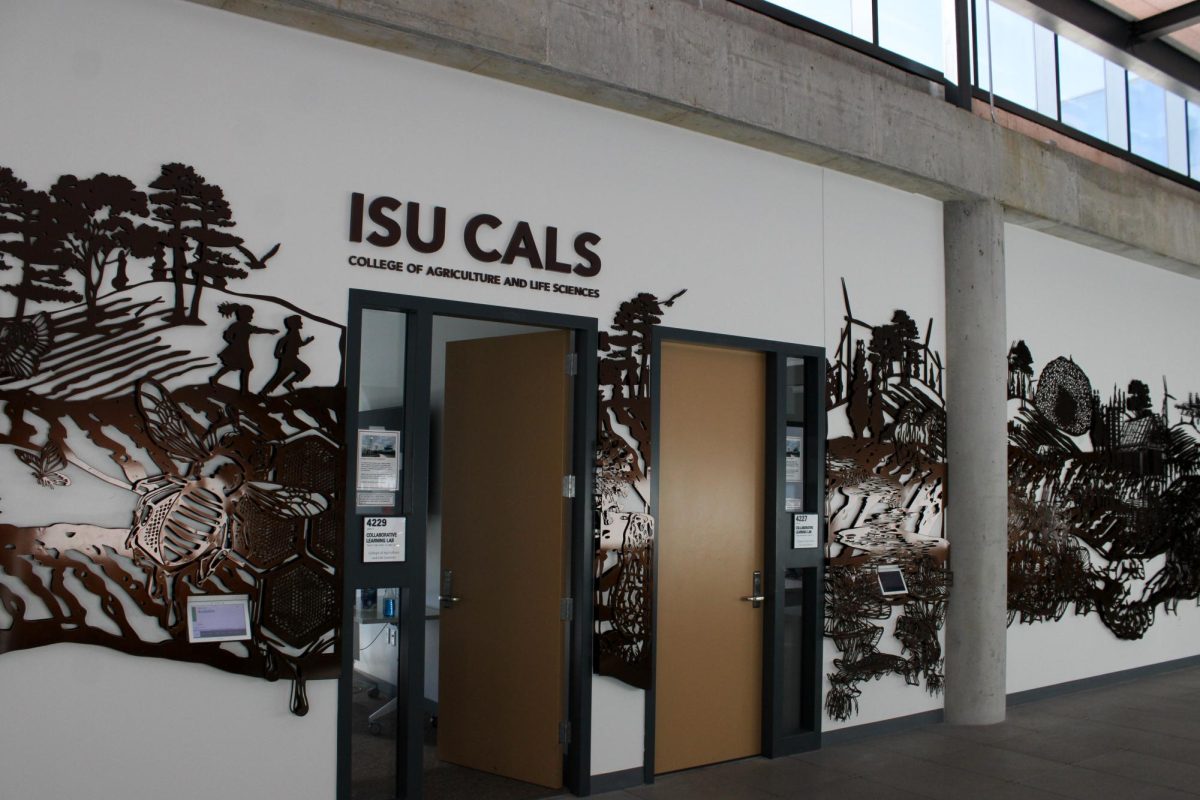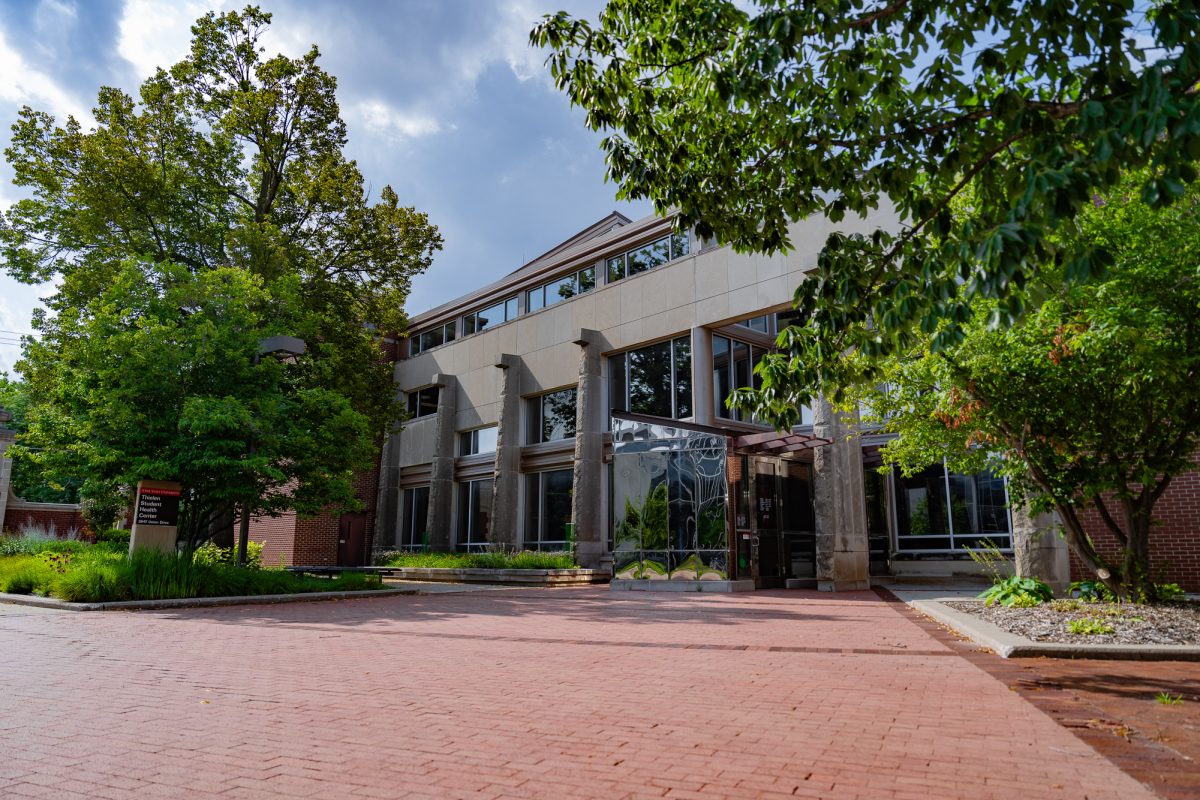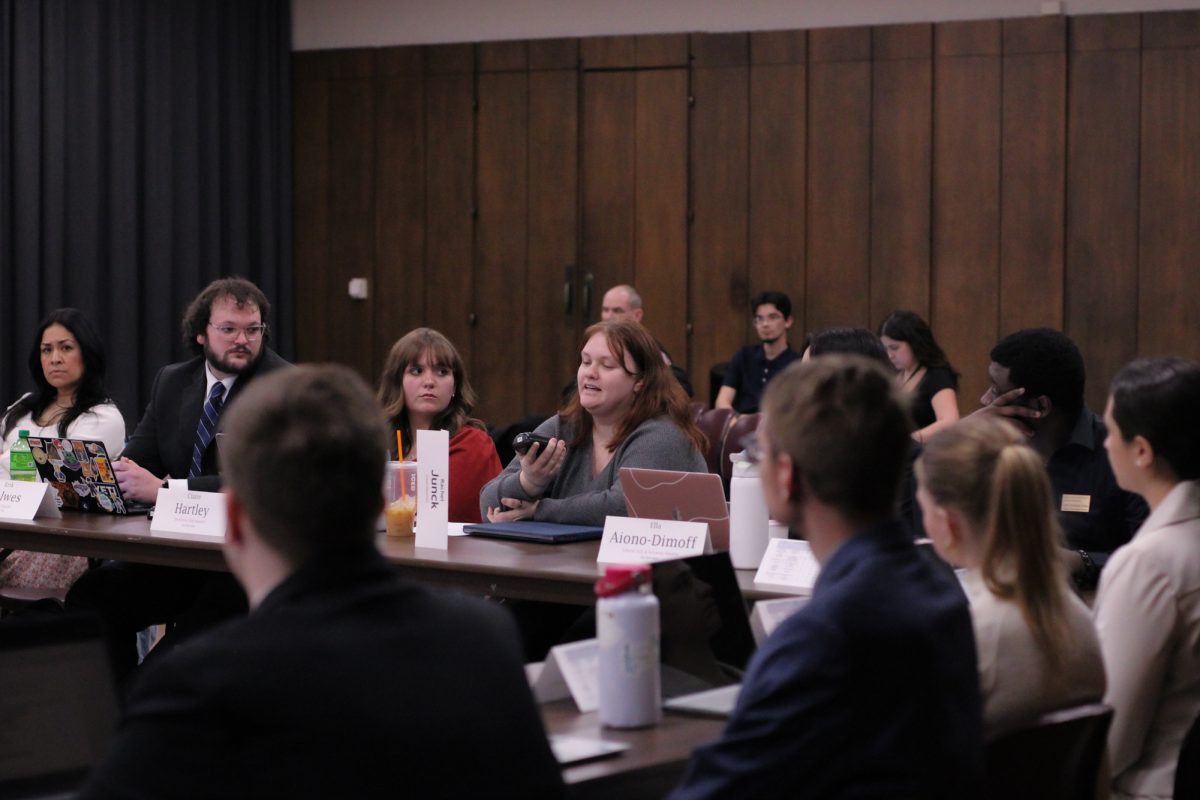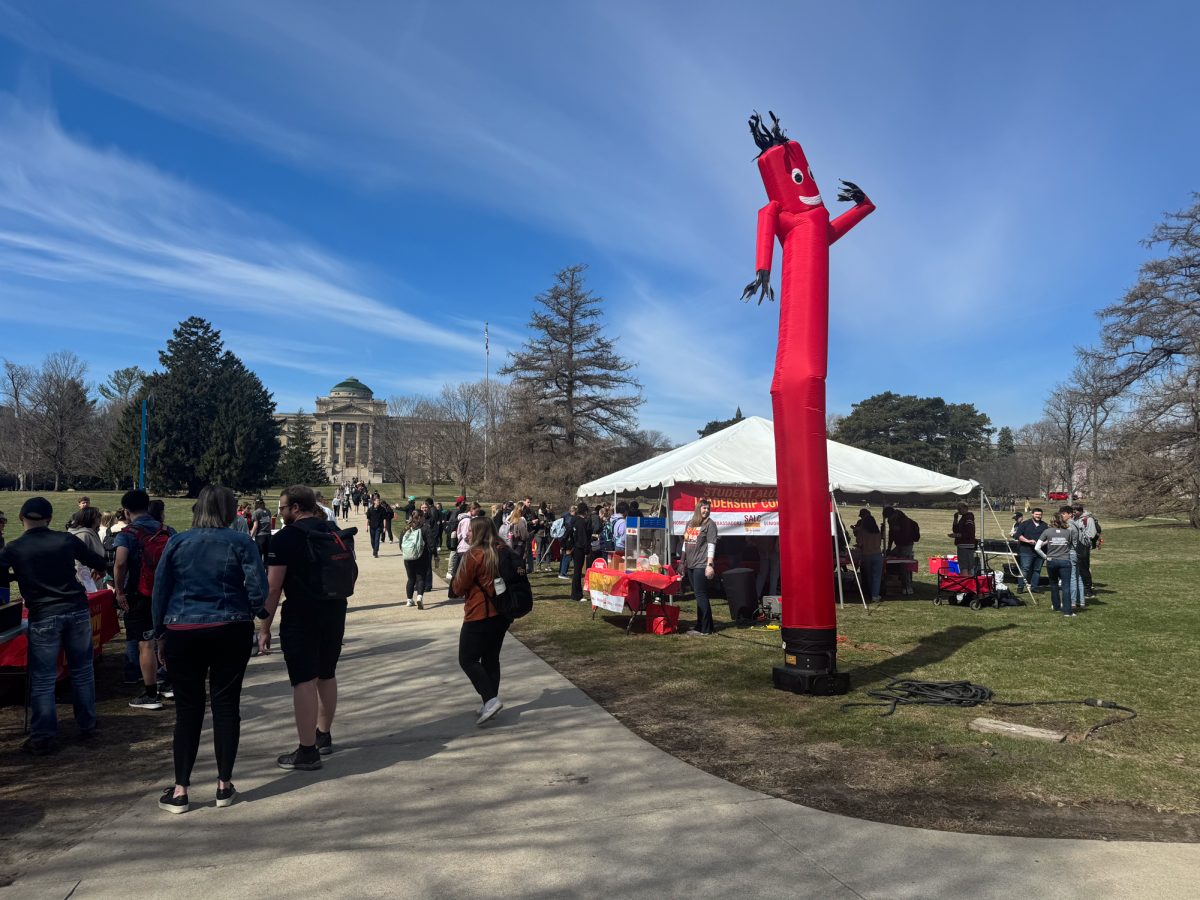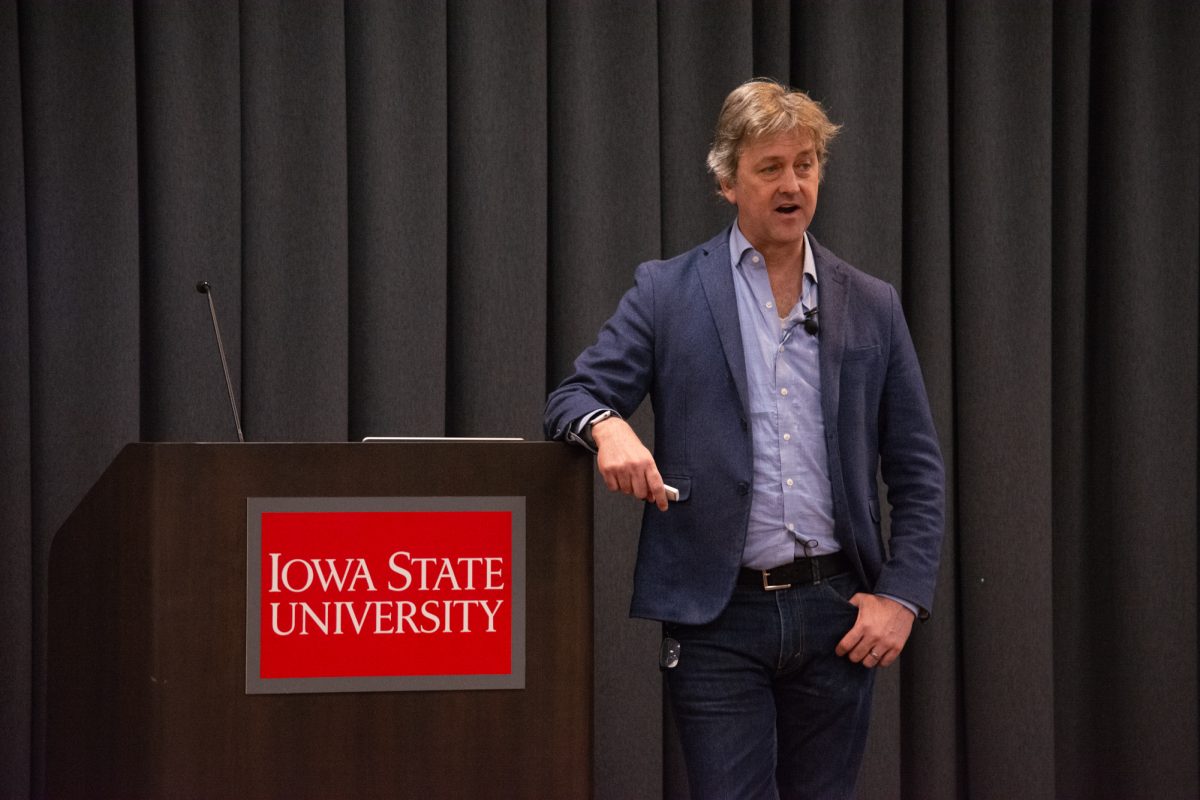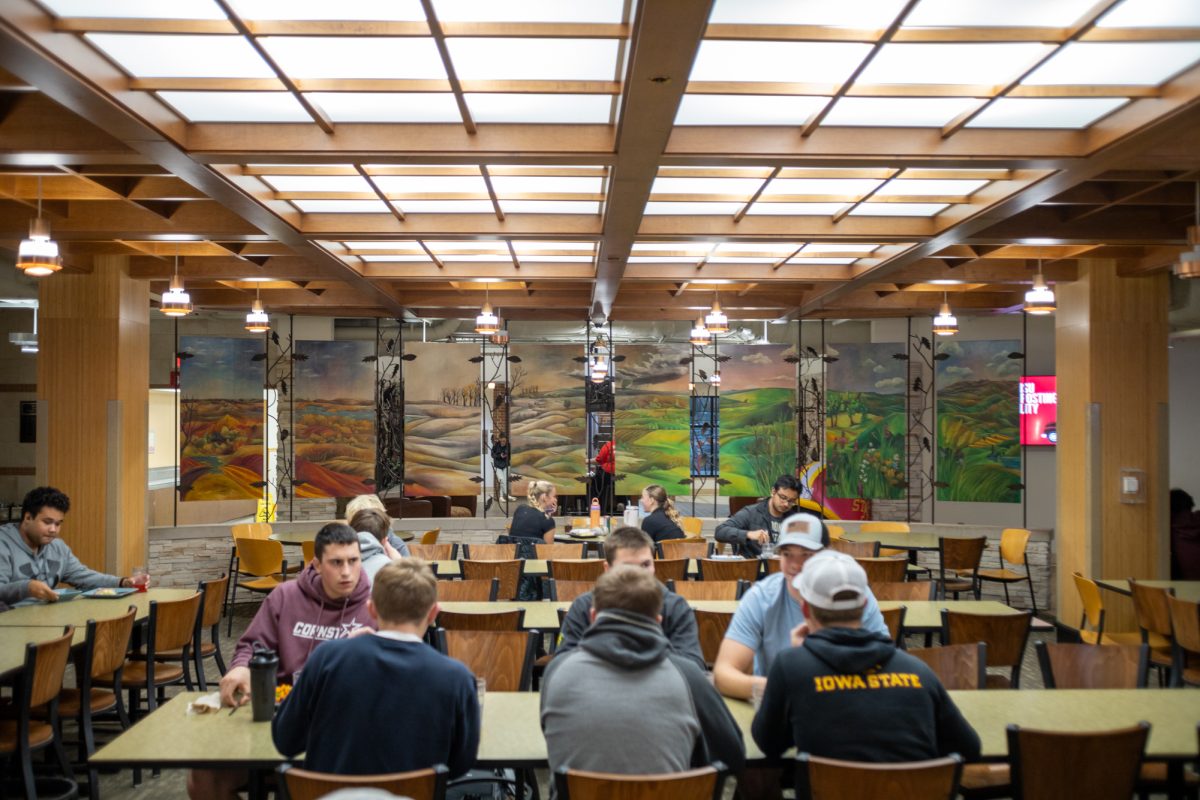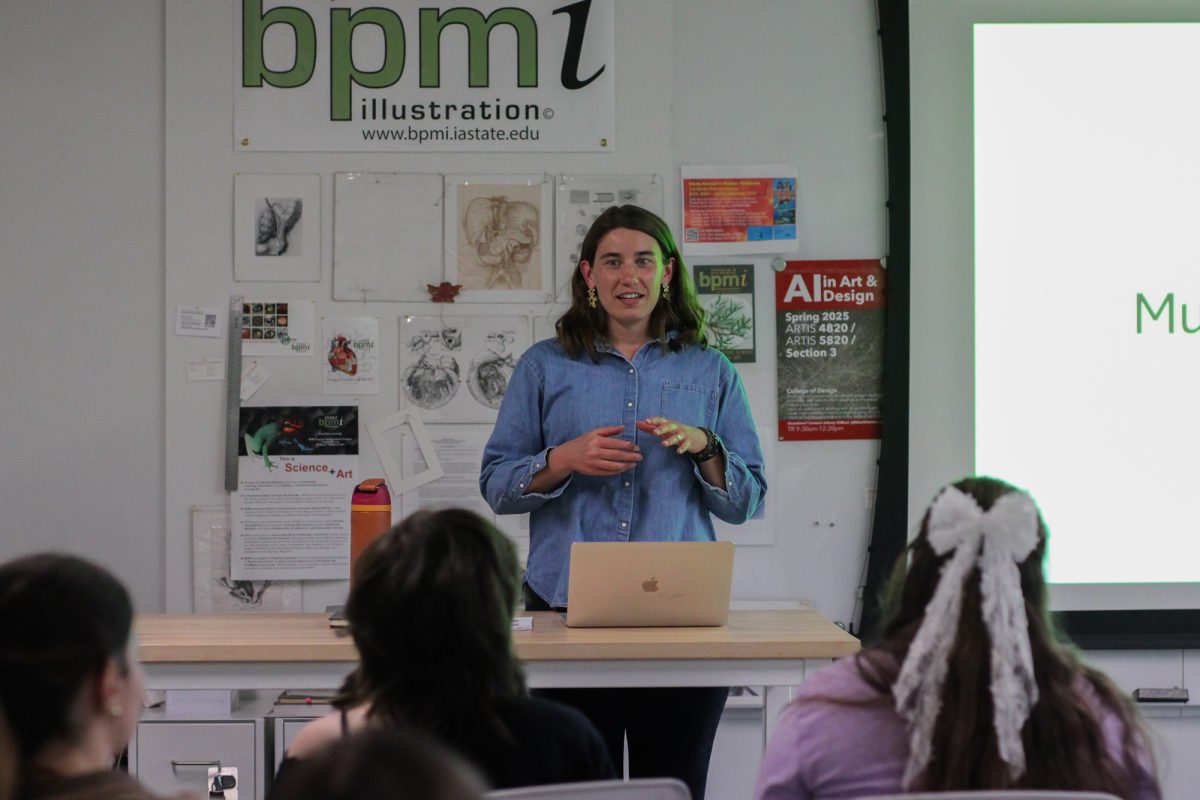The Student Innovation Center now houses new artwork that was the product of collaboration efforts from the College of Agriculture and Life Sciences (CALS) and the College of Design.
There are two different pieces of artwork: The SWARM and “Harvest of Knowledge: Innovations and Inspiration.” They are located outside rooms 4227 and 4229 in the Student Innovation Center.
SWARM, Synergistic Wisdom and Research Methodologies, prominently features a 3D-printed bee hive.
“The bee sculpture is intended to take a metaphor of bees, pollination and the hive to symbolize how we collaborate and engage with each other and create impactful interactions,” Carmen Bain, project manager for the artwork and CALS associate dean, said.
The mural concept depicts bees and their harmonious movements as they pollinate flowers, gather energy for their community and sustain ecosystems. This symbolizes the unified flow of ideas and the synergistic impact of collaborative research and creativity.
The other art mural featured in the student innovation center is “Harvest of Knowledge: Innovation and Inspiration.”
The mural is made of different dimensions of metal and is seventy feet long, wrapping around and in between the classrooms. It consists of six different but still connected scenes portraying a message as a whole.
The mural is intended to mimic a children’s “pop-up book” with its realistic effects.
“The mural has a sensory effect that makes you want to reach out and touch it,” Bain said.

The “Harvest of Knowledge” mural showcases several different key elements of the College of Agriculture and Life Sciences.
Each panel showcases a distinct theme related to the studies within CALS. It aims to engage anyone who walks by, highlighting the significance of land, water, food and technology while embodying CALS’ statement of purpose.
The artwork process took three years from start to finish. Jim Knuth, vice president of Farm Credit Services of America, met with President Wendy Wintersteen to discuss ways the organization could support Iowa State and the innovation work. Farm Credit Services of America wanted to provide financial support to showcase the two collaborative rooms within the Student Innovation Center.
The largest event process was “the collaboration between CALS and the College of Design, and the two-day design charette. It challenged student teams to develop design concepts for the different mural pieces,” Bain said.
At the end of the two days, the students presented the designs in front of a panel of judges, and students were selected.
The next step in the process was taking the designs and putting them into action.
“We were fortunate enough to recommend Reinaldo Correa Díaz, a multidisciplinary artist, who is the artist who ultimately worked on this project,” Bain said.
Reinaldo Correa Díaz is an Iowa State assistant teaching professor of architecture and industrial design.
“We met with him and he has a process of style of working and his vision of art that aligned with what we wanted to do,” Bain said. “What’s valuable about his process is that it is a collaborative process and very student-centric.”
The next process was a collaborative effort of interviews, meetings and panels, which showcased different ideas and continued the process of building the actual artwork.
“It was a long process that went on for months,” Bain said. “It was a very involved and collaborative process, which is important for us because, how do you represent tradition and representation in CALS, and the impact of our college in terms of research and teaching, extension? How do you represent that in artwork?”
The process came to an end when the artwork was showcased earlier this fall for all students, faculty and the public to enjoy.
“What I think is special about this artwork is that it was collaborative and it engaged students throughout the process,” Bain said. “Right from the beginning, we had students who could collaborate on interdisciplinary teams and think creatively and innovatively to produce this artwork. It incorporates these things we care about: innovation, collaboration [and] interdisciplinary teamwork. Our students had the opportunity to be involved in that from the beginning to the end.”


